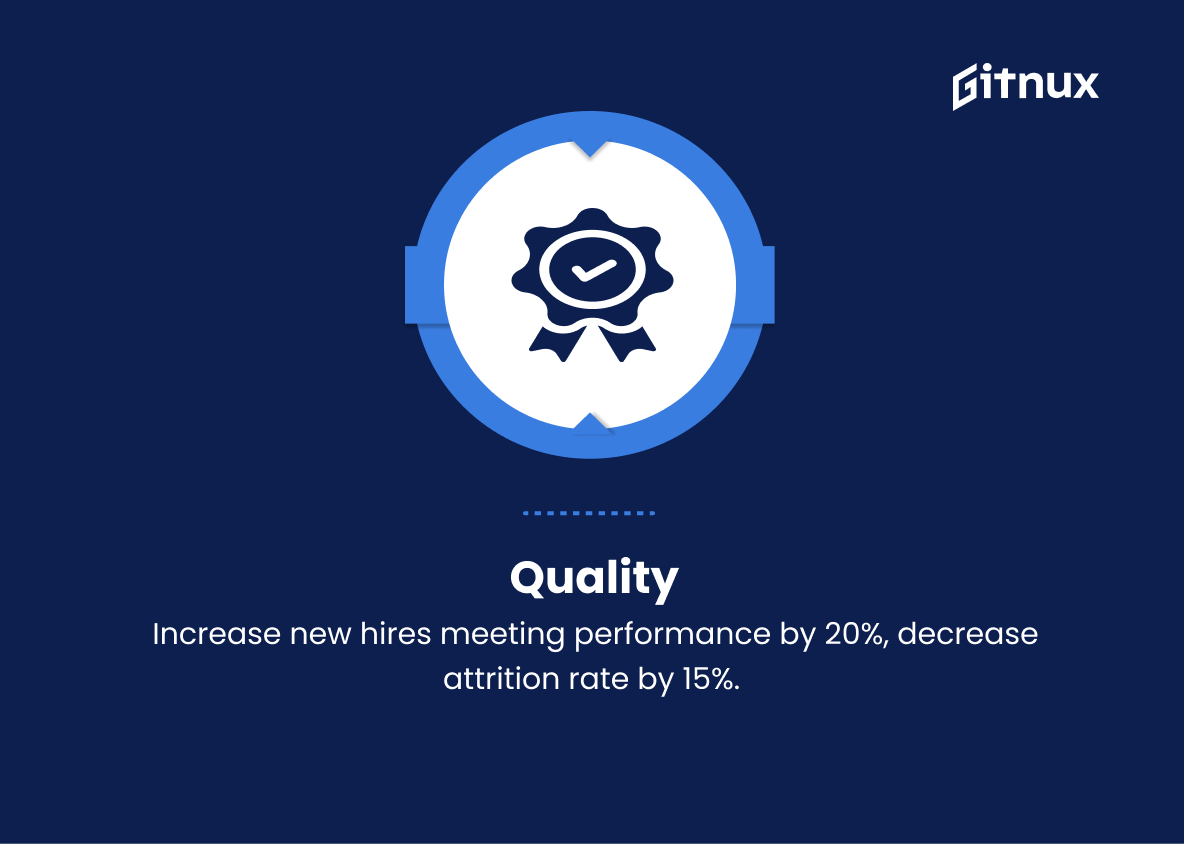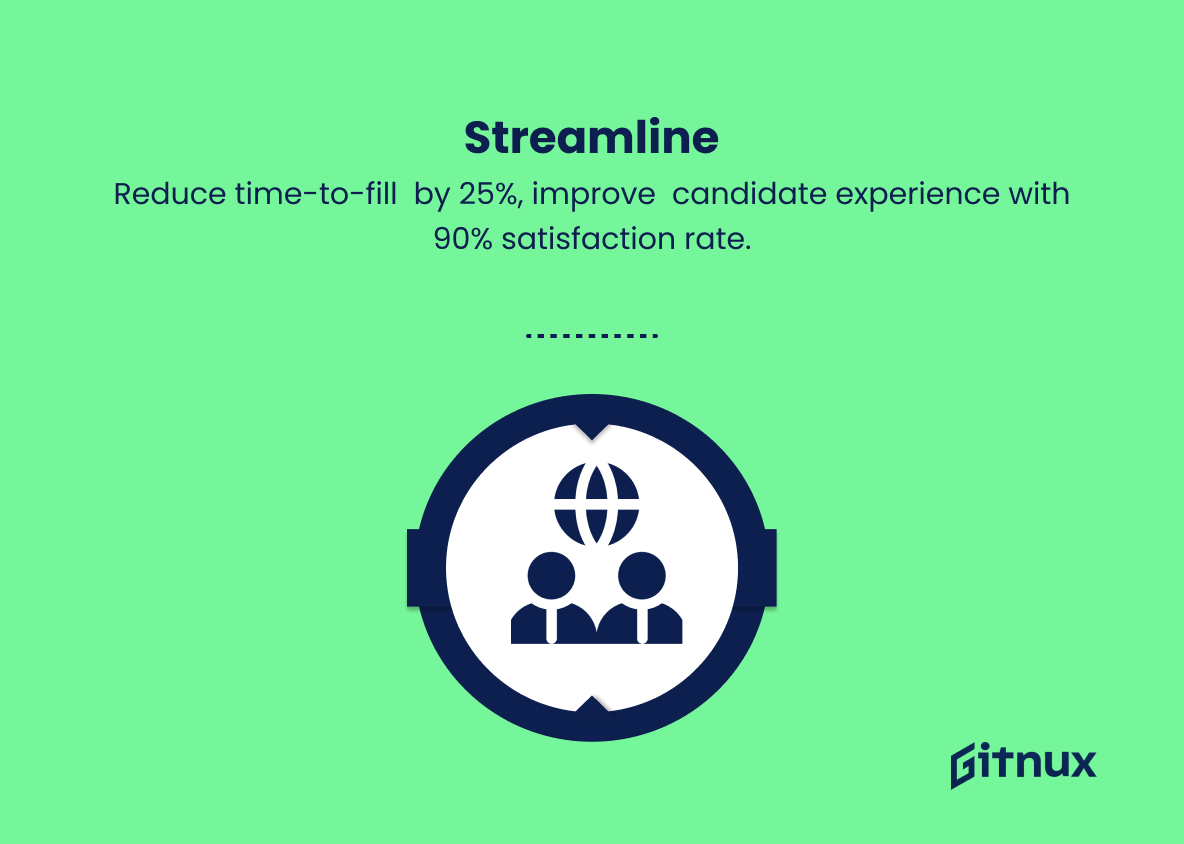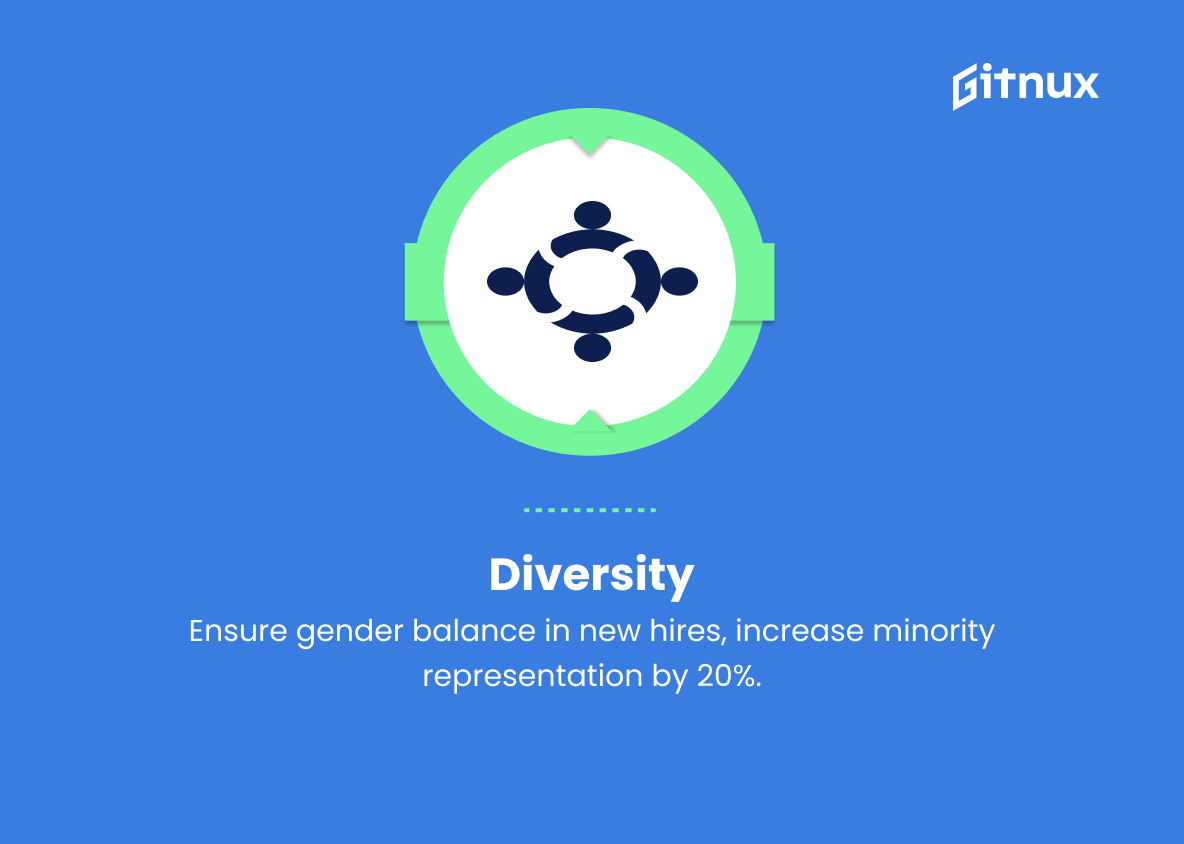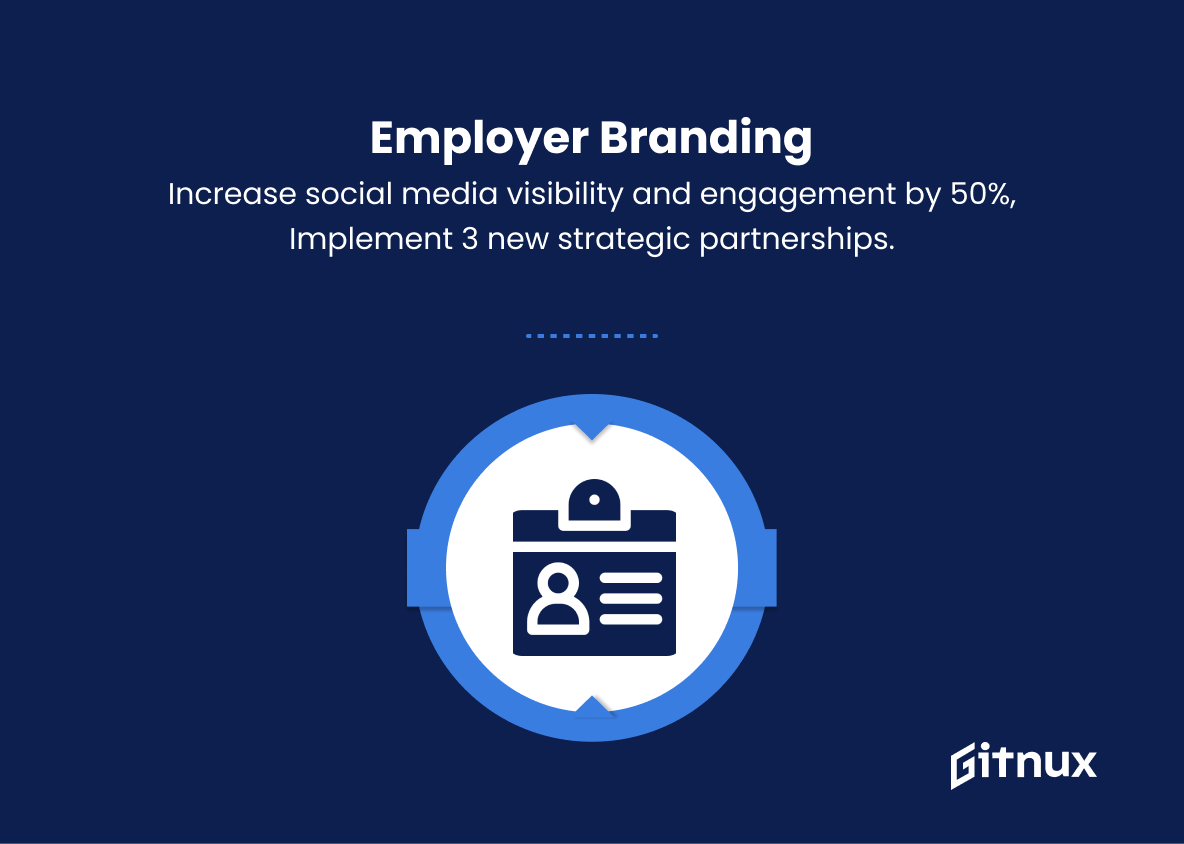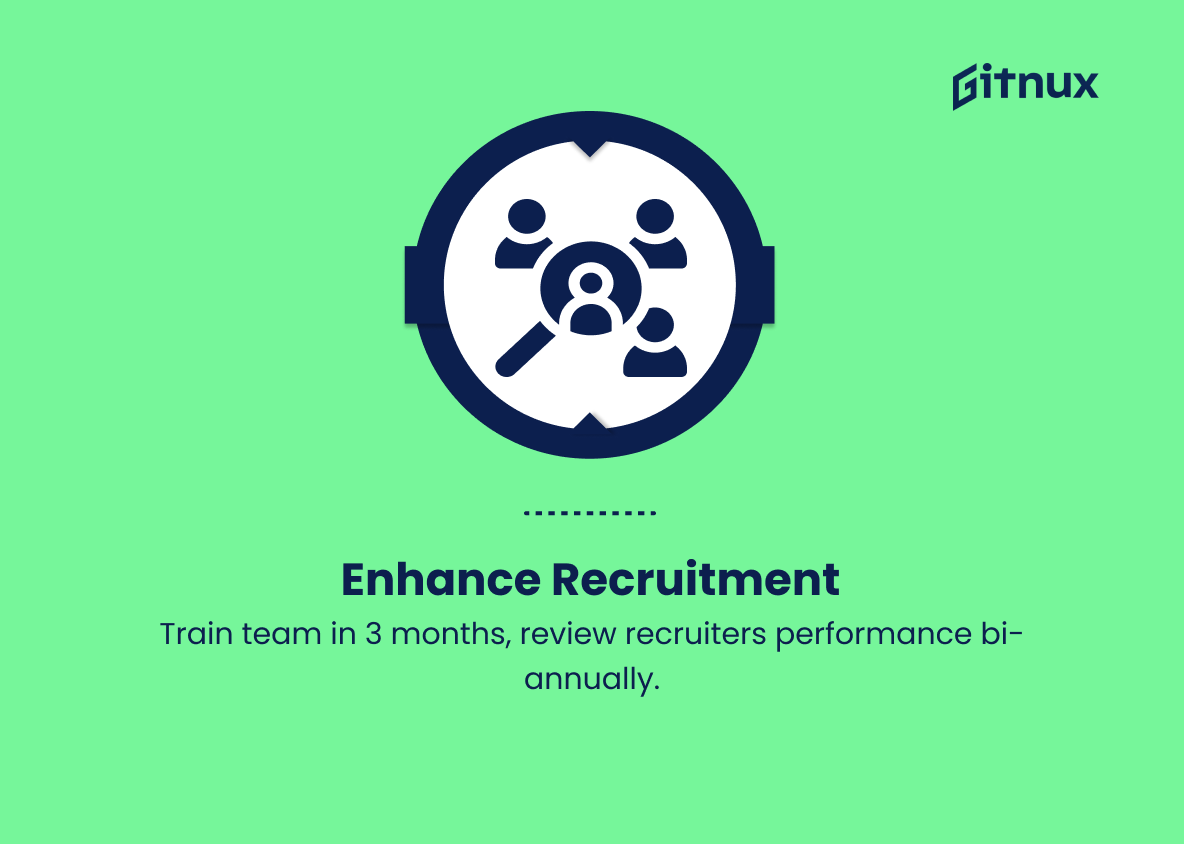In today’s fast-paced business world, attracting top talent and ensuring the success of an organization is increasingly dependent on the effectiveness of its recruitment strategies. As a result, more and more companies are turning to Objective and Key Results (OKRs), a powerful goal-setting framework that improves performance and aligns each team member’s efforts with the broader objectives of the organization.
In this insightful blog post, we will delve deep into the significance of Recruitment OKRs, examining the measurable impact they have on the hiring process and exploring examples of how industry leaders are thoughtfully implementing these strategic tools to revolutionize their talent acquisition endeavors.
Recruitment OKRs You Should Know
1. Objective: Improve the quality of new hires.
Key Result 1: Increase the percentage of new hires meeting or exceeding their 90-day performance goals by 20%.
Explanation: This OKR ensures that the team focuses on hiring individuals who can fulfill their job responsibilities and drive success for the company.
Key Result 2: Decrease the attrition rate for new hires by 15% over the next 12 months.
Explanation: Reducing turnover and retaining talented new hires helps keep morale high and ensures that the time and resources spent on recruiting and onboarding are producing lasting value.
2. Objective: Streamline the recruitment process.
Key Result 1: Reduce average time-to-fill for open positions by 25%.
Explanation: Fast and efficient recruitment demonstrates how strongly the company is positioned to scale and respond to changing industry or market conditions.
Key Result 2: Improve the candidate experience by achieving a 90% satisfaction rate in post-interview feedback surveys.
Explanation: A positive candidate experience can enhance the company’s reputation and help attract top talent in the industry.
3. Objective: Increase diversity and inclusion in the workforce.
Key Result 1: Ensure equal gender representation for all new hires during the next quarter.
Explanation: Greater gender equality fosters a more inclusive and collaborative work environment.
Key Result 2: Boost the percentage of minority new hires by 20% in the next six months.
Explanation: Increasing representation from underrepresented groups helps create a more balanced workforce and benefits from a broader range of experiences and perspectives.
4. Objective: Optimize employer branding and outreach strategies.
Key Result 1: Increase the company’s visibility and engagement on social media by 50% in the next 12 months.
Explanation: A strong employer brand can attract top talent and make hiring easier by drawing prospective candidates to the company.
Key Result 2: Implement at least 3 new strategic partnerships with universities or professional organizations to help attract diverse talent.
Explanation: Collaborating with educational institutions or professional organizations can increase the talent pool and reach a wider audience.
5. Objective: Enhance the effectiveness and efficiency of the recruitment team.
Key Result 1: Provide training on the latest recruitment tools and best practices to 100% of the recruitment team members within the next three months.
Explanation: Keeping the recruitment team up-to-date with the latest tools and techniques can help them optimize the process and achieve better results.
Key Result 2: Conduct bi-annual performance reviews for each recruiter and establish individualized professional development plans.
Explanation: Regular feedback and goal-setting can help recruitment personnel continually hone their skills and maximize their contributions to the company’s growth.
Recruitment OKRs Explained
Recruitment OKRs matter as they contribute to a company’s overall success by ensuring high calibre new hires, efficient hiring processes, and a diverse workforce. Objectives such as improving the quality of new hires and streamlining the recruitment process lead to better employee performance and faster talent acquisition, while increasing diversity and inclusion encourages collaboration and fosters a balanced workforce.
Moreover, optimizing employer branding and outreach strategies attracts top talent, while enhancing the effectiveness of the recruitment team through training and performance reviews ensures continuous improvement. Ultimately, these recruitment OKRs are vital to building a strong, dynamic, and successful organization.
Conclusion
In conclusion, Recruitment OKRs are a crucial aspect of modern talent acquisition strategies, allowing companies to measure and track their ability to attract, engage, and retain top talent effectively. By setting clear objectives and key results, organizations can align their recruitment goals with overall business objectives and ensure employees are working towards the same targets.
Furthermore, the adoption of Recruitment OKRs facilitates a result-oriented culture that promotes employee engagement, collaboration, and continued growth. As the competitive landscape of the job market continues to evolve, it is essential for businesses to embrace Recruitment OKRs to stay ahead and build a resilient workforce for long-term success.
